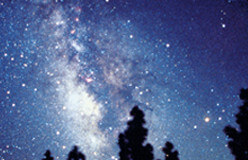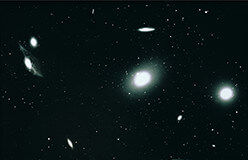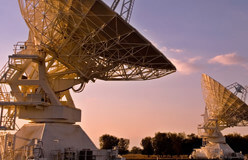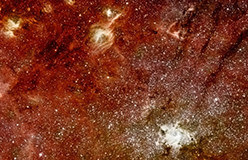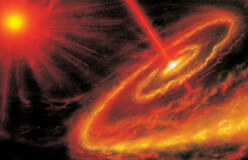Have you ever seen a galaxy? You can! Just look up on a moonless night. All the stars you see are part of the Milky Way galaxy. We live in the “suburbs” (outskirts) of this galaxy, which is made up of about 200 billion stars. The Milky Way’s central plane looks like a creamy stream across the black sky. (Galaxias is Greek for “milky.”) That “creamy stream” is really billions of stars.
A galaxy is a huge swarm of stars—plus gas, dust, and dark matter—held together by gravity. Stars revolve around the center of a galaxy, held in their orbits by its gravity. A galaxy’s center bulges with older stars. The distance between stars is enormous, however. Proxima Centauri, the nearest star to our Sun, is about 25 trillion miles away! Powerful telescopes reveal that there are billions of galaxies in the universe—the largest containing thousands of billions of stars. What other bodies “swim” in galaxies? How do galaxies form? Thanks to new technology, astronomers are finding answers to such questions—and raising intriguing new questions about our universe.
